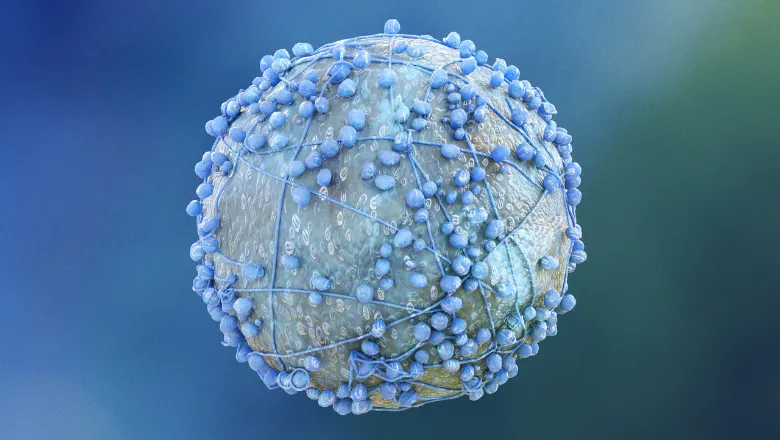We have previously shown that fascin resides in the control centre of the cell – the nucleus – at certain times in the cell’s growth cycle. However, it was not known how fascin’s movement or function within the nucleus are controlled, and this hinders our ability to develop treatments that block its role in promoting cancer growth and spread.
Lead author Campbell Lawson, Randall Centre for Cell & Molecular Biophysics
07 September 2022
Scientists reveal how key cancer target could halt cancer spread
Researchers have shown that a protein called fascin acts in the control centre of cancer cells and influences their ability to repair themselves, grow and move. The findings highlight potential pathways that could block its action.

Fascin is known to control the structures that allow cells to move – specifically the assembly of actin bundles, which create the tiny ‘legs’ that cancer cells use to migrate and invade other tissues. This invasion - or ‘metastasis’ - of tumour cells is the main reason why many cancers are so hard to treat. Fascin is also known to be at much higher levels in most solid tumours.
To understand fascin further, the team created a series of cancer cell lines with and without functional fascin, as well as a suite of fascin ‘nanobodies’ labelled with fluorescent markers, to alter its location in cells and explore its interactions with other proteins in the nucleus.
They found that fascin is actively transported in and out of the nucleus, supporting the assembly of actin bundles. Indeed, cells without fascin were unable to build nuclear actin bundles to the same extent. Fascin also interacted with another group of important proteins in the cell nucleus called histones. When fascin is not involved in bundling actin, it is bound to histone H3 – an important player in organising DNA within the nucleus.
Given its interaction with histones, the team looked at whether fascin was also involved in DNA repair processes in cancer cells. Cancer cells lacking fascin had significantly impaired DNA repair, indicating that it might be required in their response to DNA damage from chemo- or radiotherapy. These cells also had changes to their chromatin structure (which packages DNA in the cell) compared to cells with normal fascin levels.
Nuclear fascin is also important in the cell cytoplasm, where it helps cancer cells build tiny appendages called filopodia, which promote invasion. The team wanted to understand whether moving all fascin into the nucleus would prevent the cytoplasmic function of fascin.
In cells with enhanced nuclear fascin, the number of filopodia was significantly reduced because there was no fascin in the cytoplasm to support assembly of these structures. Importantly, cells that had forced nuclear fascin had significantly reduced growth rates and viability because they assembled large stable actin bundles in the nucleus which prevented them from going through the cell cycle.
Collectively, these results indicate that, rather than blocking fascin, forcing it into the nucleus of cancer cells could prevent their growth and movement.
Our study provides insights into a new role for fascin in controlling nuclear actin bundling to support tumour cell viability. Given fascin is at very high levels in many solid tumours, but not in normal tissues, this molecule is an interesting therapeutic target. We propose that promoting fascin accumulation in the nucleus of cancer cells, rather than only focusing on targeting it in the cell cytoplasm, could be an alternative approach that would prevent both tumour growth and spread.
Maddy Parsons, Professor of Cell Biology, Randall Centre for Cell & Molecular Biophysics

